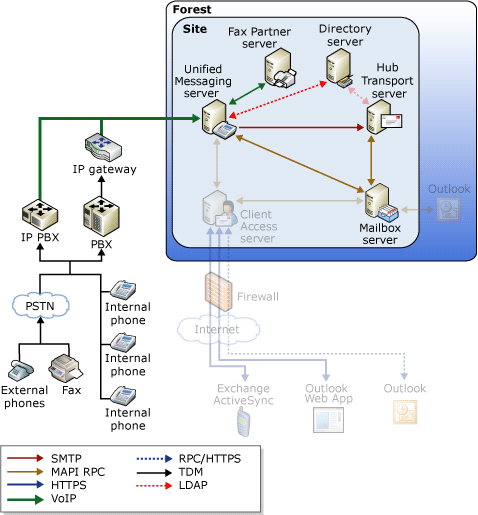Applies to: Exchange Server 2010 SP3, Exchange Server 2010 SP2
Topic Last Modified: 2011-04-28
Incoming voice messages are received by your organization's telephony network and then passed to a Microsoft Exchange Server 2010 Unified Messaging (UM) server that handles and routes the incoming call. This topic discusses the message flow for incoming voice messages received by a Unified Messaging server.
Voice Incoming Messages
Voice calls that come in to an Exchange 2010 organization can be received from users who are inside or outside the organization. When a caller places a call to a UM-enabled user's telephone extension and the user is unavailable to answer the call, the Private Branch eXchange (PBX) forwards or routes the incoming call to an IP gateway and then to the Unified Messaging server. In a Unified Messaging system that uses an IP PBX, the IP PBX forwards the incoming message to the Unified Messaging server. The IP gateway or the IP PBX translates or converts the incoming stream into a Voice over IP (VoIP) protocol such as the Session Initiation Protocol (SIP) for incoming voice messages. The stream of IP data is then passed on to the Unified Messaging server. After the Unified Messaging server receives the call, the Unified Messaging server processes the message and determines how to route the message.
The following figure illustrates how incoming voice messages flow in an Exchange 2010 organization.


